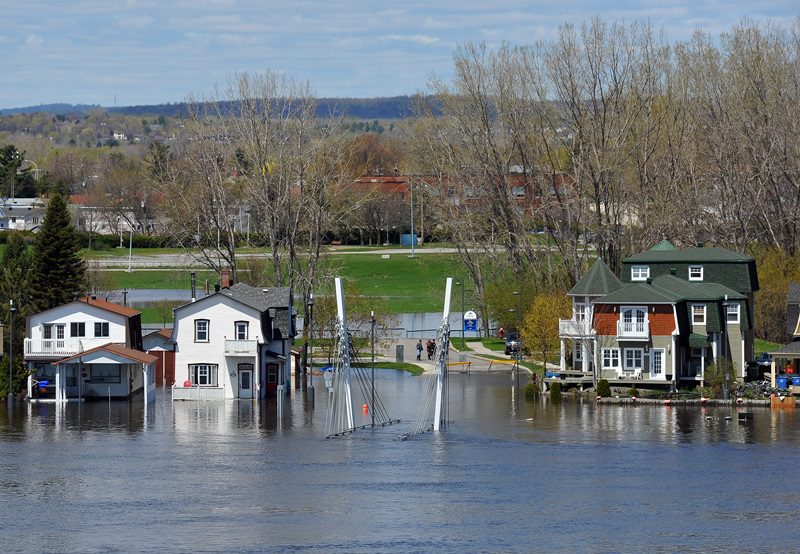What Aviva CEO suggests to improve resilience in wake of Ontario, Quebec floods

Recent flood-related catastrophes in Ontario and Quebec have pointed to the need for Canadian communities to become more resilient by boosting investment in their infrastructure, says Aviva Canada CEO Tracy Garrad.
Also, Canadian policymakers must grapple with critical questions about future development, says Garrad, who responded to a question from CU about improving community resilience to mounting NatCats in Canada. Garrad’s remarks were part of an interview discussing the company’s 2024 half-year results.
“There is more you can do — for example, in flood,” Garrad said. “[Governments must make] policy decisions about where developers are allowed to build, where homeowners are allowed to rebuild, the designs of those dwellings and the level of resiliency [the structures] have.
“Also, of course, government investment in infrastructure to deal with these torrential downpours [would improve resilience]. If you look at what happened in Ontario and Toronto in 2013, and you look at what happened three weeks ago, there are some parallels, lessons learned, in terms of the infrastructure [needing] to improve. So, I think, definitely, more proactive things need to be done and to be taken seriously.”
In other news: Why insurers’ auto repair costs are still going up
In 2013, the Toronto-area storm dumped 126 mm of rain on the city—more than Hurricane Hazel in 1954—cutting power to hundreds of thousands of homes, halting subway service, and flooding roads and basements. That storm caused insured losses of approximately $1 billion at the time.
Fast forward to July 2024, when a torrential downpour flooded several Ontario cities, including Toronto. Insurers are still trying to pinpoint an exact estimate of the insured damages. Insurance Bureau of Canada has proposed the Ontario flooding could cost the P&C insurance industry more than $1 billion to repair the damage.
Aviva Canada’s financial results for the first half of 2024 were solid, including a 94.7% discounted combined ratio, a a gross written premium growth rate of 10.5%.
But the secondary perils in Canada over the past month — which will impact the company’s bottom line in the third quarter — are top of mind right now. The company is focused on helping Canadians sort out their lives after multiple catastrophes, as Garrad said.
Regarding the financials, Aviva is projecting the company will likely absorb its proportional share of the P&C insurance industry’s losses over the past month.
“We do have reinsurance treaties in place for severity,” Garrad said. “It’s really too early to tell yet just what that severity is going to look like. It’s going to take a few more weeks for the emergent claims to pull through.”
Garrad noted preliminary estimates suggest the Canadian P&C insurance industry will pay roughly $1 billion for the Ontario flooding, more than $700 million for Jasper wildfire damage, and a Calgary hailstorm will cost around $1 billion. It’s too early to tell how much the Montreal flooding from Hurricane Debby will cost.
As for Aviva’s own estimated losses as a result of the past month’s Cat losses, “we’re estimating our market share of [those losses] being broadly in line [with industry losses].”
Aviva’s total market share in 2023 was almost 9% in Canada, per MSA Research data published in the 2024 edition of Canadian Underwriter’s Stats Guide.
Feature image courtesy of iStock.com/PaulMcKinnon



